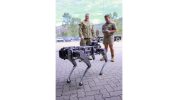Search
Using the filters to the left, click your selection, it will become bold and filter the results, click it again to remove that filter.
Introduction Quantum technology [1] has the potential to disrupt the modern battlespace and fundamentally change the way Army trains and fights. Comprehending the impact of these technologies to the integrated force requires an understanding of their scale and potential influence, application, suppliers and how these three factors interact. Technology Readiness Levels (TRLs), a summary of which is shown in Annex B, provide a standardised scale of technological maturity from concept through to employment. …

Context Australia’s strategic geography will continue to present new challenges and opportunities into the future. The nation will remain an enormous landmass with a small population at the bottom of Asia. Yet, no longer is our region a strategic backwater with geographic depth. Our historic geographic advantage is being eroded by grey zone actions, the reach and lethality of modern weapons, the potency of anti-access and area-denial (A2AD) systems, and the broader modernisation of other nations’ military …

Army has established an office within the Future Land Warfare Branch of Land Capability division to increase its adoption of disruptive technologies. The role of the Robotic and Autonomous Systems Implementation Coordination Office (RICO) is exploration, coordination and concept development using disruptive technology. Director General of Future Land Warfare Brigadier Ian Langford said the RICO was “consistent with the CA’s vision of being future-ready by looking for opportunities to integrate technology …
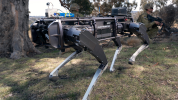
Yesterday on the Land Power Forum—thanks to an article from Army News—we briefly introduced you to the Robotic and Autonomous Systems Implementation Coordination Office (RICO) operating out of Future Land Warfare Branch of Army’s Land Capability Division. The recently established Robotic and Autonomous Systems Implementation Office (RICO) is responsible for pursuing Army’s interests in Robotic and Autonomous Systems (RAS) / Artificial Intelligence (AI) and disruptive technologies and ethically leverage …
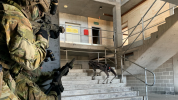
‘The military that is able to figure it out and… that can weave together the old and new, not just old and new technology but old and new thinking, they will be the ones that win.’ ( Peter Singer ) Inevitable hardening of military robotics suggests that development of war munitions won’t be immune to the impact of mechatronic warfare . Like the almost indestructible killer robot immortalised in the popular science-fiction franchise Terminator , near-future military robots portend to be tenacious and …

While militaries publicly declared an interest in robotic and autonomous systems (RAS), no documented wide-scale deployments of weapon systems exist. Occasional Paper 20, Understanding how to scale and accelerate the adoption of RAS , co-branded with RAND identifies a promising range of RAS technologies with military implications and evaluates the potential barriers to their widespread adoption. … Occasional Paper 20 release - Understanding how to scale and accelerate the adoption of …
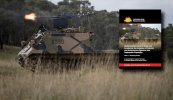
Introduction The Ukraine war has thrust small drones into the spotlight as an integral component of contemporary combined arms warfare. Cheap, plentiful, and attritable commercial off-the-shelf (COTS) drones (sometimes referred to as ‘wedding drones’ with equal parts respect and derision) [i] have proven their utility for military roles such as dropping explosive ordnance onto targets and performing intelligence, surveillance, and reconnaissance (ISR) activities. [ii] Both of these capability effects …
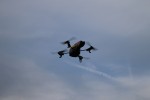
Biological Swarms The concept of swarms originates in nature, often referred to as biological systems or natural swarms. [1] Swarm intelligence (SI) research originally pertained to studying the self-organised behaviours of social insects. [2] An example of the SI demonstrated by social insects is provided in a 2004 study on ant colonies building networks of galleries which demonstrate path system efficiency. [3] The intelligence that emerges from collective behaviour has been harnessed in robotics …

Introduction Human soldiers are the army’s most valuable resource. A lot of money is invested in their training. In order to minimise their exposure to risk, where possible they should be replaced with inexpensive robots. A good example is collecting intelligence at observation posts, where human soldiers tend to get tired and bored, and need a reliable supply of food, water and electrical energy (e.g. batteries or solar cells). Robots could also be used to support dismounted soldiers. In this application …

Introduction The recent Defence Strategic Review (DSR) has brought to light significant challenges previously unnoticed by defence commentators and the broader Australian public. Two key tenets of the DSR are concerns about climate change, and the need for an asymmetric capability, which in turn pose questions about our capability to meet domestic emergencies and defence of our sovereignty. [i] The implementation of existing and emerging autonomous technologies at scale will contribute significantly …
